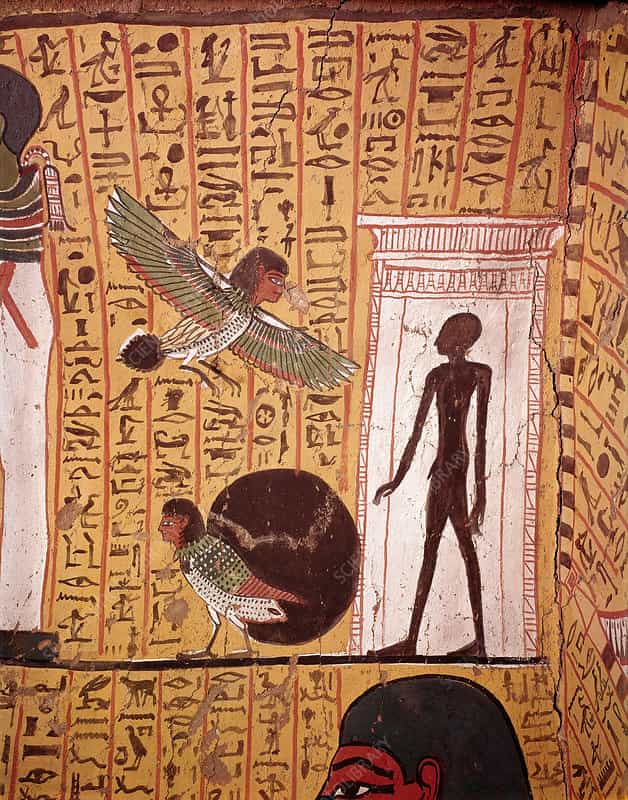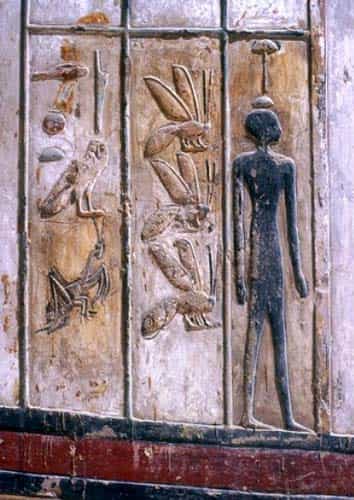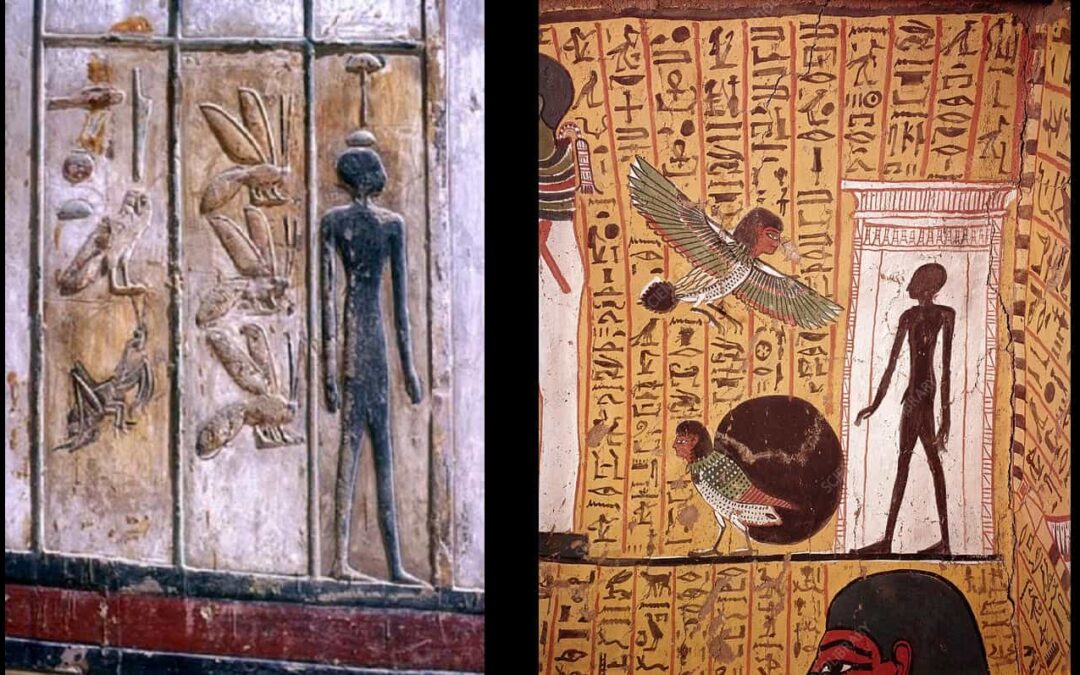The Shuyet, also known as the shadow, was one of the many ancient Egyptian souls, alongside the ren (name), ka (double or life force), ba (personality or soul), akh (spirit), and the physical body. Together, these elements formed the complete human being.
It served as a highly effective protective principle, capable of swift movement, accompanying the deceased throughout the day and remaining inseparable. Represented as a mysterious double of man in negative form, it constituted an essential part of an individual and their existence.
Typically depicted as a black human form, this chromatic aspect can be interpreted in two ways: firstly, as the shadow cast by any object when blocking the Sun, resulting in a black appearance; secondly, symbolizing the fertile land of the Nile Valley, associating it with elements beneficial to humans, making black a significant protective and auspicious color.
The shadow frequently appears in funerary contexts, often positioned alongside the body, perhaps to facilitate greater ease and swiftness of movement. Although it did not ascend to heaven, it remained attached to the earth and the earthly realm. Despite this belief, the shadow could briefly accompany the Ba upon its departure from the tomb.
In a commentary on the Book of the Dead, Egyptologist Ogden Goelet, Jr. discussed the forms of the shadow:
“In many Book of the Dead papyri and tombs, the deceased emerges from the tomb during the day in the guise of a shadow—a thin, black, featureless silhouette of a person. This form represents a mere shadow of their former existence, yet they continue to exist. Another manifestation of the shadow, especially concerning the gods, is an ostrich feather parasol—an object capable of creating a shadow.”








